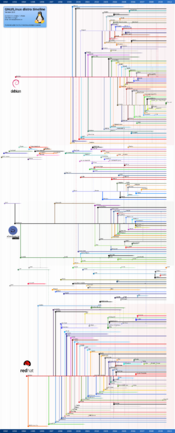Linux is a multi-user, multi-tasking, 32-bit operating system based off of the UNIX operating system developed in the 1960s. One of the main characteristics that sets it apart from other operating systems such as Windows is that it is open source, meaning that the source code comes with it and the user is able to modify, sell or redistribute it freely. But a company or an organization did not write Linux, it was written by a college student named Linus Travolds. With the help of many programmers, often called hackers? Linux has surprised many people by being a stable, high quality system that has little central control.
The kernel is the heart of an operating system, and when most people refer to Linux, they are talking about the kernel and not the whole system. On a Linux system, the user is more in touch with the kernel, mainly because he/she can do whatever they want to it legally.
Also, people around the world are always updating the kernel, but Travolds has the final word into what goes into each release. Linux is one of the few operating systems that has a particular kernel version number scheme. For example, a stable kernel version can be 2.4.25. Even numbered kernels, such as 2.2.7, are stable, while odd numbered, such as 2.5.14, are pre-releases. The 2 is for the major release, the 4 is for the minor release leading up to the major, and the 25 is for the even smaller change leading up to the minor release. After that, there are prepatches (acknowledged with an rc after the version number) that are alpha releases. If any new development is good enough, the kernel can skip numbers, so a kernel can go from 2.2.3 to 5.0 in a few months, but it has...


